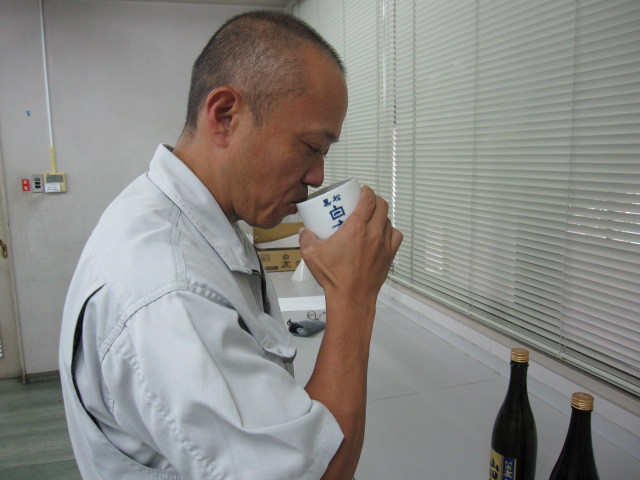Kiki-zake・kiki-shu
- 【English】
- Sake tasting
- 【Japanese】
- きき酒
Terms for the task of sensorily judging the colour, aroma, taste and so on of sake. First, one looks at the colour and transparency of the sake poured into the kiki-choko (tasting cup). Next, one examines the top notes (the aromas rising from the surface). After that, one takes a small amount (4-10ml) of sake into the mouth, and, breathing out the through the nose, examines the flavour-in-the-mouth (hikikomi-ka , 引込み香). Next, taste elements such as sweet and dry, and the balance of flavour are assessed, spreading the sake out over the front and back, left and right of the tongue. Finally, the sake is spat out into a spittoon, and the after-taste evalued.
The length of time taken to taste one sample varies according to the length of time the sake is kept in the mouth, but about two or three seconds is usually thought to be appropriate.
Kiki-zake is carried out with the seishu to be evaluated kept at room temperature, around 20°C. This is known as reishu kiki (冷酒きき). In contrast, tasting with warmed sake samples is called kanshu kiki (燗酒きき), or sometimes nesshu kiki (熱酒きき), and usually happens with samples at about 50°C. Room-temperature tasting is the more common.

kiki zake

